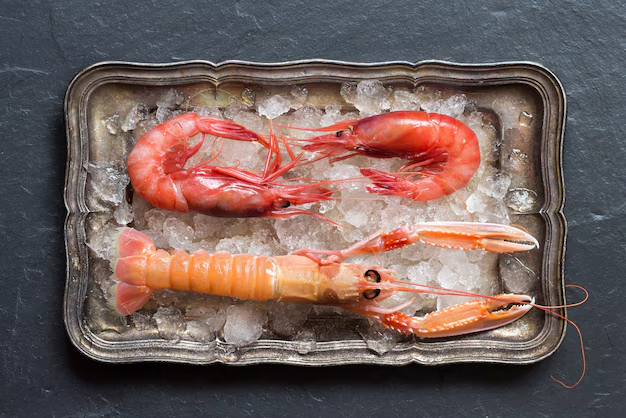How Long Can You Safely Keep Boiled Shrimp in the Refrigerator?
If you've recently indulged in a seafood feast or have some scrumptious boiled shrimp left over from a delightful dinner, you might be wondering: How long does boiled shrimp last in the refrigerator? This is not only crucial for preserving flavor, but most importantly, for ensuring food safety.
In this article, we will explore this topic extensively, offering you comprehensive insights into proper storage, potential risks, and further considerations related to keeping boiled shrimp in your refrigerator.
The Shelf Life of Boiled Shrimp in the Refrigerator
Basics of Refrigeration
Refrigeration is a common method people use to extend the shelf life of their food, including shrimp. The cool temperature of a refrigerator slows down bacterial growth, significantly reducing the risk of spoilage and foodborne illnesses.
Shelf Life of Boiled Shrimp
Boiled shrimp, when stored correctly in a refrigerator at a consistent temperature of 40°F (approximately 4°C), can last for 3 to 4 days. This time frame ensures that the shrimp retains its quality while being safe to eat.
Key Tips for Extending Shelf Life:
- Cool Quickly: Transfer boiled shrimp to the refrigerator as soon as possible to prevent the growth of bacteria.
- Airtight Storage: Use airtight containers or tightly sealed plastic bags to store the shrimp, minimizing exposure to air and bacterial contamination.
- Monitor Temperature: Make sure your refrigerator is operating at the correct temperature (at or below 40°F) to keep your shrimp fresh and safe.
Recognizing Spoiled Shrimp
Knowing the signs of spoilage is essential to avoiding foodborne illness. Here are some indicators that your boiled shrimp may have gone bad:
- Off Smell: Fresh shrimp should have a light, ocean-like scent. If your shrimp emits a strong, unpleasant odor, it's time to discard it.
- Color Changes: While cooked shrimp typically retains a pinkish hue, any noticeable discoloration or transparency can indicate spoilage.
- Texture Changes: If the shrimp feels slimy or sticky, it’s likely spoiled and should not be consumed.
How to Properly Store Boiled Shrimp
Refrigeration Guidelines
Initial Storage Steps
- Remove Shells: If possible, remove shells before storing to make reheating or further preparation easier.
- Separate Portions: Divide leftover shrimp into meal-sized portions before storing, which can help preserve the shrimp’s texture and prevent unnecessary thawing and refreezing cycles.
Using the Freezer for Longer Storage
For those looking to store boiled shrimp for an extended period, the freezer is a viable option.
- Freezing Process: To freeze boiled shrimp, lay them out on a baking sheet, ensuring they’re not touching. Place in the freezer for a couple of hours until frozen, then transfer to a freezer bag or airtight container.
- Storage Duration: Properly frozen boiled shrimp can last for up to 3 months.
The Science of Shrimp Spoilage
Understanding Bacterial Growth
Bacteria thrive in environments between 40°F and 140°F, a range often referred to as the "Temperature Danger Zone." Keeping your shrimp outside this range by refrigerating or freezing is crucial to avoid spoilage.
Enzymatic Activity
Enzymes naturally present in shrimp can lead to textural changes and breakdown of flavors over time. Refrigeration slows but does not completely halt this process, which is why adhering to recommended storage times is important.
Practical Tips for Shrimp Lovers 🍤
- Label and Date: Always label your shrimp with the storage date to ensure you're consuming it within the safe period.
- Plan Ahead: If you anticipate not consuming leftovers within a few days, opt for freezing.
- Thawing Safely: When ready to eat frozen shrimp, thaw them overnight in the refrigerator for best results.
Storing Other Types of Seafood
Understanding how shrimp lasts in the refrigerator might encourage you to look at other seafood delicacies. Generally, most boiled seafood has a similar refrigerator shelf life as shrimp but always check specific guidelines for each type.
Making the Most of Leftover Shrimp
Leftover boiled shrimp can be a culinary delight, offering numerous options to repurpose:
- Appetizers: Use them as toppings on crackers with a dollop of cream cheese.
- Salads: Add to vibrant salads for a protein boost.
- Pasta: Toss with olive oil, garlic, and fresh herbs for a quick pasta dish.
Creative Shrimp Recipes
Try incorporating leftover shrimp into recipes that keep things exciting and flavorful:
- Shrimp Tacos: Simple yet delicious, these can be dressed with fresh slaw and avocado.
- Shrimp Fried Rice: Quick and satisfying, perfect for a fast weeknight meal.
Safeguarding Your Health
Common Foodborne Risks with Seafood
Improper storage of seafood, including shrimp, carries a heightened risk of foodborne illnesses such as Vibrio and Salmonella. Strict adherence to food safety guidelines is essential, ensuring your meal is as safe as it is enjoyable.
General Seafood Safety Tips
- Always ensure seafood is cooked to the proper internal temperature.
- Avoid cross-contamination with raw foods during preparation and storage.
- Keep your refrigerator clean and regularly check its temperature.
When to Discard Shrimp
Even with proper storage, knowing when to let go of leftovers is crucial. Err on the side of caution and discard leftovers at any sign of spoilage or after four days in the refrigerator.
Summary of Key Takeaways 📋
- Refrigerate boiled shrimp within two hours of cooking to maximize freshness.
- Consume within 3 to 4 days or freeze for up to 3 months.
- Inspect shrimp before use: if it smells off or texture is slimy, discard immediately.
- Label and date your shrimp to stay aware of their storing timeline.
- Store in airtight containers to prevent odor absorption and bacterial growth.
By adhering to the above guidelines, you ensure not only the flavor and texture of your boiled shrimp are preserved but also prioritize the health and safety of those enjoying them. Never underestimate the importance of proper food storage—it's your first line of defense against foodborne illnesses and spoilage. Happy cooking and safe storing! 🍤
